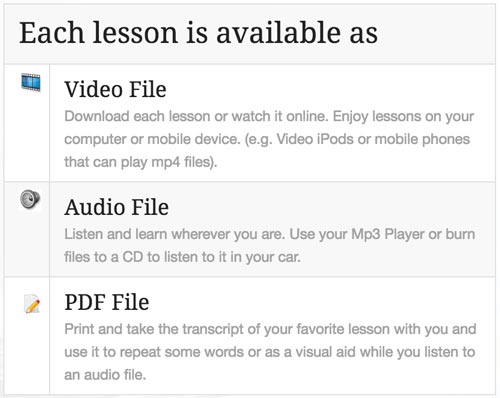As of 2020, Learn Thai Podcast is no longer being updated. At the time of writing the program is still available to buy; however, the owners have confirmed that no further updates will take place and no new lessons will be added going forward. They will still provide customer service support.
If you are looking for a fully supported Thai language learning program, I recommend you check out my review of Thaipod101 here.
—————-
In this Learn Thai Podcast review, I’ll give you my personal, frank experience of the program. In the conclusion, I'll summarize what I believe to be the pros and cons, and give you some learning advice before you move forward.
From the beginner tools, through to the learning to read and write worksheets and the intermediate and advanced speaker/s materials, I’ve given all the learning materials a thorough test drive for you.
Let's start…
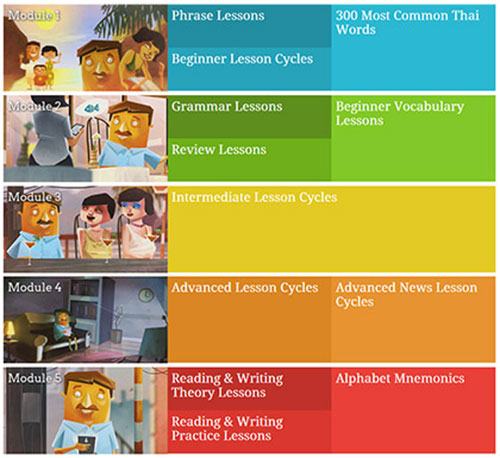
Getting Started with the Beginner Tools
Firstly, I should say don’t be put off by the name; it’s not a podcast that you have to tune into or download each week.
The name is derived from the original format, which is a spoken video lesson style. The course has been reorganized and repackaged in recent times, with more appealing artwork and better organization, but the Video-PDF-Audio format remains.
If you're a beginner to learning Thai, there's 4 core elements to start with:
- Start with 150 useful Thai phrases you'll use in everyday situations
- Learn the 300 most common Thai words that will get you creating sentences fast
- Use the 60 Thai sentence templates to help you start piecing sentences together
- Run trough the beginner lesson cycles to help you familiarize with question and answer scenarios
This beginner structure has been designed to get you talking Thai immediately, which helps prevent that disappointing “I’ll never be able to speak Thai” feeling that usually leads people to quit at the first hurdle.
Once you get comfortable with some basic phrases, the course takes you a little deeper into grammar.
There’s 42 grammar and word usage lessons, and each grammar lesson comes with a dedicated review lesson.
In addition, there’s special pronunciation lessons. I thought this was a good addition – because everyone struggles with this aspect of learning Thai due to the non-native nature of the alphabet.
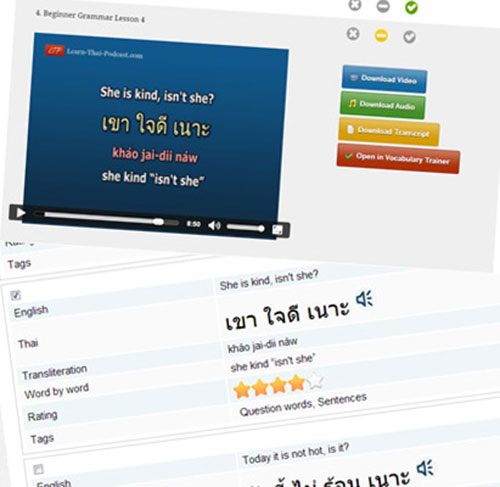
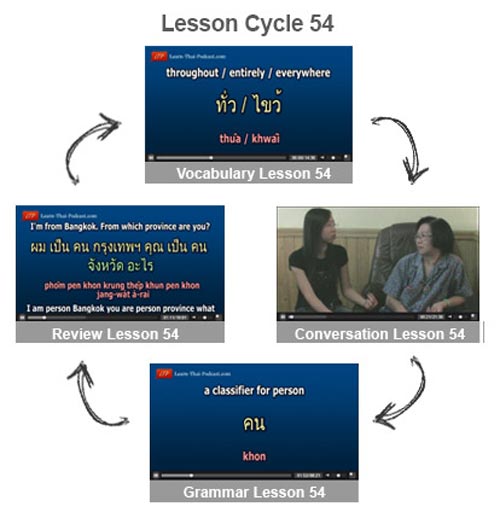
Learning to Read & Write Thai
Anyone who can speak Thai will tell you that you can rapidly advance your speaking proficiency by learning the alphabet.
My advice would be to jump straight into the alphabet section as soon as you can, if possible in tandem with learning your beginner phrases.
Trust me, you’ll be streets ahead of other learners if you learn the alphabet early on. The thing about Thai is that it's easy to learn lots of words without learning the alphabet. Indeed, I have met almost fluent speakers of Thai who can't read and write, at least not to a decent standard.
Sure, learning the alphabet isn't as easy as learning basic phrases with the phonetic text, but it's essential for laying down the foundation for intermediate and advanced speaking.
The course comes with a solid number of alphabet resources to take advantage, including Thai alphabet memory aids, theory lessons, practice lessons and writing exercises.

Moving Forward: Learning Intermediate Thai
Each of the 73 intermediate lesson cycles consists of four lessons that relate to each other, which keeps a nice context to the learning cycle.
The format remains the same: a vocabulary lesson, a conversation lesson, a grammar lesson and then a review lesson to test and reinforce what you've covered.
But where the intermediate level really steps up from ‘beginner' is that in addition to Central Thai (the Thai you'll hear spoken in Bangkok), there are specific lessons on different Thai dialects; for example, Northern, Southern and Northeastern.
This will be particularly helpful for those with a partner from a province outside of Bangkok, because as you'll know, when traveling to these places, the Thai is completely different, particularly in the deep South, and Northeast (where they speak Isaan, a unique blend of Thai and Laos).
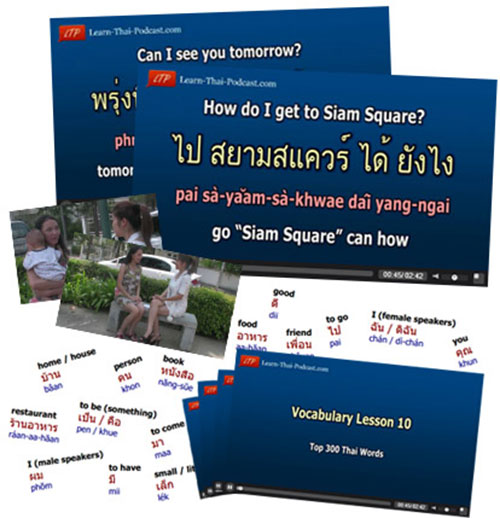
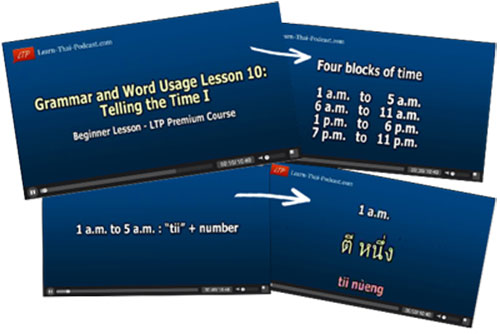
Advanced Level Learning
Advanced lessons follow a different format and are delivered in 16 lesson cycles.
However, like the beginner and intermediate lesson cycles, each consists of four lessons.
You’ll learn stuff like the following:
- How to follow along telephone conversations and other longer conversations between native Thai speakers.
- How to read, understand and listen to the much more formal Thai that is spoken in the news and TV shows.
- Besides the regular lessons, all advanced (and intermediate) lessons are also available in Thai only. This offers a real test to prove whether you can understand Thai without the aid of an English translation.
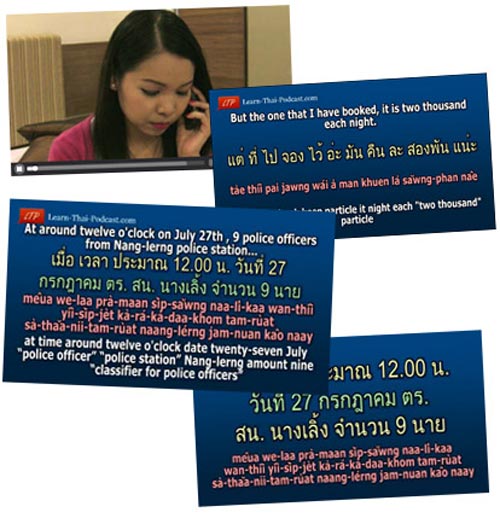
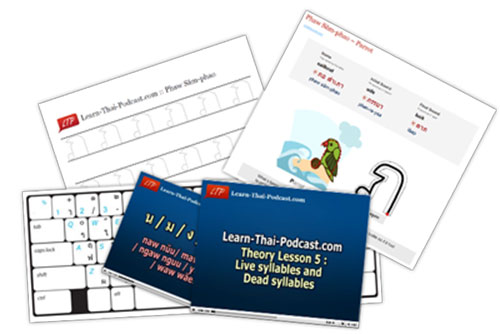
Multimedia: Downloading – Listening – Watching
As you'd expect with any online/digital course these days, you can study the Learn Thai Podcast course on your computer, tablet and smartphone. Each lesson is provided as an audio file to listen to, a pdf file to print, and a video file to watch.
That said, I find watching the expectation to download everything a bit amateur. I feel like a better portal could be created so that everything can be easily accessed and learned on the website. I know it's tricky on smaller screens, but the program needs some development in this area.
In this respect, I find Thaipod101 to be far superior.
=> Read about TP101 (my favorite program) here
Thai Podcast Course Pricing
The cost for the complete course is $197.
It's not bad value, but when you consider that there's no lesson feedback option (from a teacher), that the content remains fairly static (nothing new has been added for ages), and that the dashboard isn't interactive (you really need to download everything), it's fair but could be better value.
One positive on the price is that if you can’t afford to pay the total amount upfront, they offer a payment plan of 3 consecutive monthly payments of $49.95.
You will pay the first installment at the time you subscribe, then you will automatically be debited at the same time each month until the remaining 3 payments have been made.

My Thoughts, In Conclusion
I like The Learn Thai Podcast course.
It's got everything you need to jump in and start learning basic Thai very quickly. I dig the video lessons and the emphasis on learning the Thai alphabet. It also caters for intermediate learners, and has advanced lessons, too.
So it is comprehensive; I'll give it that.
However, I personally think the course needs updating a bit.
First and foremost: I think the portal needs an upgrade, so that it's truly mobile and users don't have to download material for an immersive learning experience.
I mean, I still like to learn from my computer, but if I swap to my tablet, or even my mobile, I don't want a fiddly experience where I am forced to download material that I'd rather view on screen.
I also think new content should be added more regularly. A diverse set of learning tools is essential to maintain interest and consistency, and to break up the learning process to avoid monotony.
Tests, quizzes, flashcards, ‘word of the day', lesson recaps, new words and even reward-based learning is part and parcel of the majority of modern language learning platforms these days.
The price is pretty reasonable though. It's a lifetime fee, which means no additional costs or upgrades.
Personally though, for a little extra money, I'd check out the Premium option on Thaipod101. It has so much more to offer.
Part of me is pained to say that; because Thaipod is run by a language learning company with a bigger budget than the independent Thai Podcast outfit.
But that's the way it goes, man. When you're laying out this much money, you have to go for not just best value but what's most likely to produce results.
Some Motivational Learning Advice
Remember, whatever course you choose, give yourself a fair chance to get to grips with the learning curve.
Consistency and persistence is everything. Set aside time every day to do some practice. Find a way to motivate yourself each day. Some days you won't feel like learning Thai, but do it anyway, even if it's just 20 minutes.
Every day you'll learn something new, and slowly a molehill turns into a mountain.
Everyone picks up things at a different pace, so don't get down on yourself.
For example, a guy in my condo block has been learning Thai for about a year. I remember that after a month of learning he was almost ready to give up because he felt he just wasn't making enough progress.
Fast forward to today and he now texts his girlfriend in Thai, all the time!
Me? I am terrible at remembering names let alone learning a language.
But it takes time…
Just yesterday, at my friend's office, a woman started talking to me about the rain we've been having and how it has made her journey to work very difficult. I was confused because where I live it has been raining at night and not in the morning. So I answered and explained this to her in Thai.
She was really impressed because she didn't know I could speak Thai (I usually speak English with the people at this office).
She complimented me on how native-sounding my accent was. Of course, she was being overly nice (most likely), but the point is she understood me. I'm no expert, but I can hold a decent conversation, and that's really rewarding.
Learning Thai gives life in Thailand a whole new perspective. It opens doors. It helps you integrate and enjoy the experience that much more.
You might well find your progress is very slow to start with but gathers pace around month 2 or 3.
Some people grasp simple conversational Thai very easily but never get to the advanced stages because they can’t get to grips with the tones and long sentences; others are better with the technical aspects.
Everyone’s learning experience is slightly different. Focus on your learning pathway, not the progress of others. If you really want to learn this language, you can. And you can be very good at it.
I've met guys here who didn't finish high school but can speak fluent Thai. Go figure!
If you have any questions or need advice, drop it in the comments section below.

